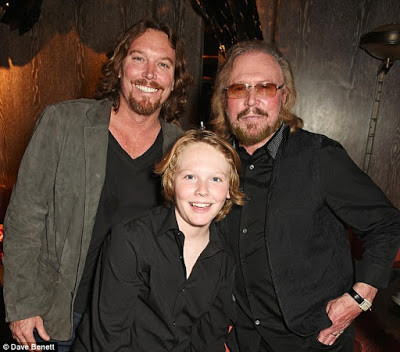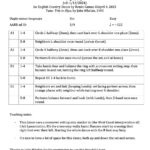The Bee Gees’ “You Should Be Dancing” remains an iconic disco anthem, four decades after it first topped the US charts. For fans and aspiring dancers alike, the infectious rhythm and soaring vocals are irresistible. But beyond the dance floor appeal, there’s a fascinating story behind this hit. We delve into the creation of this classic track, exploring its lyrical nuances and the intricate studio magic that made it a global sensation. If you’ve ever wanted to know more about the Lyrics To You Should Be Dancing By The Bee Gees and the song’s rich history, you’ve come to the right place.
The 40th Anniversary of a Disco Masterpiece
In a recent interview, Barry Gibb, the legendary voice behind The Bee Gees, shared captivating insights into the making of “You Should Be Dancing.” This interview, part of a series celebrating Barry Gibb’s new album In The Now, reveals the meticulous process and surprising details that went into crafting this timeless hit.
Barry Gibb in 2016, reflecting on the legacy of “You Should Be Dancing” and his enduring musical journey.
The conversation began with a charming anecdote about family, linking generations through music and dance. Barry recounted seeing his grandson, Lucas, tearing up the dance floor at a Sony Summer Party. This intergenerational love for music and movement served as a perfect segue into discussing the song that gets everyone moving: “You Should Be Dancing.”
Crafting the Rhythm: More Than Just Lyrics
The interviewer, Tim Roxborogh, steered the conversation towards the 40th anniversary of “You Should Be Dancing” reaching number one in the US. He touched upon intriguing aspects of the recording, such as Stephen Stills’s contribution on percussion and the reported sixteen layers of percussion.
Barry Gibb reminisced about the intensive creative process, revealing that the track was cut “at least four times.” The Bee Gees, perfectionists at heart, “fixed things over and over again” during a two-week period dedicated to assembling the song. He highlighted the “incredible environment” of discovery in the studio, where they experimented with “more accurate rhythms” and explored the Latin influences prevalent in their Miami surroundings. This fusion of disco energy with Latin percussive elements became a signature element of “You Should Be Dancing.”
Vocal Layers and Studio Secrets: Beyond the Falsetto
One of the most fascinating revelations from the interview was Barry Gibb’s unexpected vocal contribution during the trumpet solo. Many listeners might be surprised to learn that Barry’s iconic falsetto isn’t just limited to the main vocal melody; it’s woven into the instrumental breaks as well. He explained how they would “add something else that made it unusual,” taking advantage of the increasing number of recording tracks available at the time.
Three generations of Gibbs: Barry, Ashley, and Lucas, showcasing a family legacy connected by music and dance.
Barry also mentioned singing the instrumental melody in “Jive Talkin’,” another Bee Gees hit, emphasizing their commitment to layering vocals and unconventional studio techniques to create a unique sonic texture. This dedication to sonic experimentation is a key factor in the enduring appeal of their music.
The Collaborative Mix: A Ten-Person Balancing Act
The mixing process for “You Should Be Dancing” was a testament to the pre-digital era’s challenges and collaborative spirit. Barry described a remarkable scene: “it took 10 of us to mix that song. [As in], 10 at the board.” With no digital undo or automation, the entire mix had to be performed live, with ten people simultaneously manipulating faders.
Barry’s specific role was controlling the echo repeat on the line “Whatcha’ doin’ on ya’ back?”. This detail highlights the precision and real-time decision-making required in the studio at that time. If anyone made a mistake, the entire mix had to be restarted. This high-pressure environment fostered a sense of collective focus and likely contributed to the raw energy captured in the final recording.
From Studio to Smash Hit: Recognizing Something Special
Despite the meticulous work, Barry Gibb maintains a humble perspective on predicting hit songs. While artists often struggle to foresee a song’s chart success, he admitted that with “You Should Be Dancing,” there was a shared feeling among the Bee Gees that “this is great. This is special.” This intrinsic sense of quality, rather than a calculated attempt at a hit, drove their creative process.
He contrasted “You Should Be Dancing” with “How Deep Is Your Love,” which he felt was destined to be a number one record even before it was fully realized. “You Should Be Dancing,” on the other hand, was born from a desire to create a dance track, inspired partly by admiration for artists like The Beach Boys and their meticulously crafted pop songs. It was a conscious effort to tap into the burgeoning dance craze and create a song that would compel everyone to move.
Relive the Magic: Vocal Clarity and the Enduring Appeal
To truly appreciate the vocal intricacies of “You Should Be Dancing,” Barry Gibb recommends listening to the vocal-only version available on platforms like YouTube. Hearing the vocals isolated reveals the “clarity” and “detailed…harmony lines” that might be missed in the full mix. You can clearly hear Barry’s breaths before singing and the distinct echo on “Whatcha’ doin’ on ya’ back,” offering a fresh perspective on a familiar classic.
“You Should Be Dancing” isn’t just a collection of catchy lyrics to You Should Be Dancing by The Bee Gees; it’s a testament to studio innovation, collaborative spirit, and the Gibb brothers’ unparalleled musical talent. It continues to inspire dancers and music lovers worldwide, four decades after its release, proving its timeless appeal.




